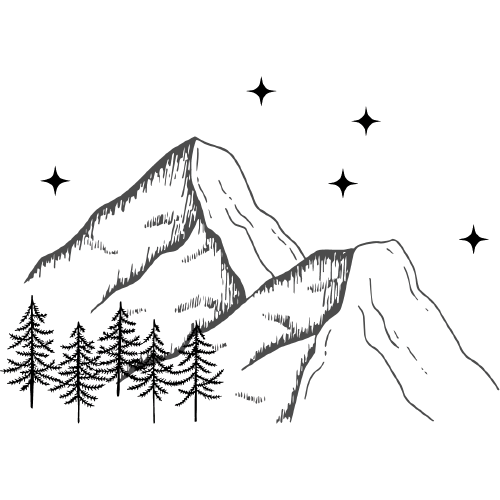The Complete Guide To Saguaro National Park
Saguaro National Park is one of the three national parks in Arizona.
And while the Grand Canyon may be the Arizona national park that most people think of, Saguaro National Park is definitely worth visiting as well.
And lots of people agree. According to the National Park Service, Saguaro National Park had over 760,000 visits in 2020, making it the 24th most visited park that year.
The main attraction at this national park is the namesake saguaro (pronounced sah-WAH-row) growing all throughout the park. These cacti are only found in southern Arizona and across the border into Mexico.

There are fewer “touristy” highlights and fewer amenities than in other national parks. Therefore I might not plan a whole vacation centered around visiting this park, but if you’re going to be in the area I would at least add a day trip to your itinerary.
Ready to plan your trip? Keep reading to find out everything you need to know about Saguaro National Park!
Where is Saguaro National Park?
Saguaro National Park is on the outskirts of Tucson, AZ in southern Arizona.
There are two separate sections of Saguaro National Park. The western district (Tucson Mountain District) is west of Tucson and the eastern district (Rincon Mountain District) is to the east.
Click here to see a map.
How to Get to Saguaro National Park
The two sections of Saguaro National Park are located on either side of Tucson, AZ. The closest major airport is Tucson International Airport (TUS).
Alternatively, Saguaro National Park is 1.5-2 hours south of Phoenix by car, so it’s worth checking out flights to Phoenix Sky Harbor International Airport (PHX) as well.
I was staying in Phoenix when I took my day trip to Saguaro National Park. I had plenty of time to drive there, explore the west district, and drive back in one day.
Where to Stay in Saguaro National Park
I took a day trip to the park so I didn’t need to find a place to stay in Saguaro National Park. However, if you’re planning to end your day there or visit for multiple days, it’s important to know that options to stay within the national park boundaries are limited.
The only sort of lodging available in Saguaro National Park is backcountry camping in the east district. These campgrounds require permits and a minimum of 4-5 miles of hiking.
Car camping is not allowed anywhere in the park and there is no other lodging within the park boundaries.
Typically when I visit national parks I like to camp. If you’re set on camping during your trip, consider the following campgrounds near Saguaro National Park:
- Gilbert Ray Campground (near the west district)
- Tucson/Lazydays KOA Resort (in between the west and east districts)
- North of the eastern district, there are a number of campgrounds in Coronado National Forest.
- Click here for additional information on camping in the Tucson area.
Otherwise your best bet may be to stay somewhere in Tucson.
When to Visit Saguaro National Park
Saguaro National Park is open year-round.
Since Saguaro National Park is in the desert, summers are very hot and winter temperatures are more mild.
Visitors who want to explore the park’s many trails should aim to come between October and April. (When I visited the first weekend in September, it was over 100 degrees, so I did minimal hiking.)
If you want to avoid crowds, keep in mind that the cooler months (November through March) are also the busiest.
Time your trip for the spring if you’d like to see the cacti in bloom. Saguaros typically bloom from mid-May into June, but other varieties will bloom in March and April.
Lastly, visitors should be aware that torrential thunderstorms may occur July through September. This can cause dangerous conditions due to flash flooding and lightning.
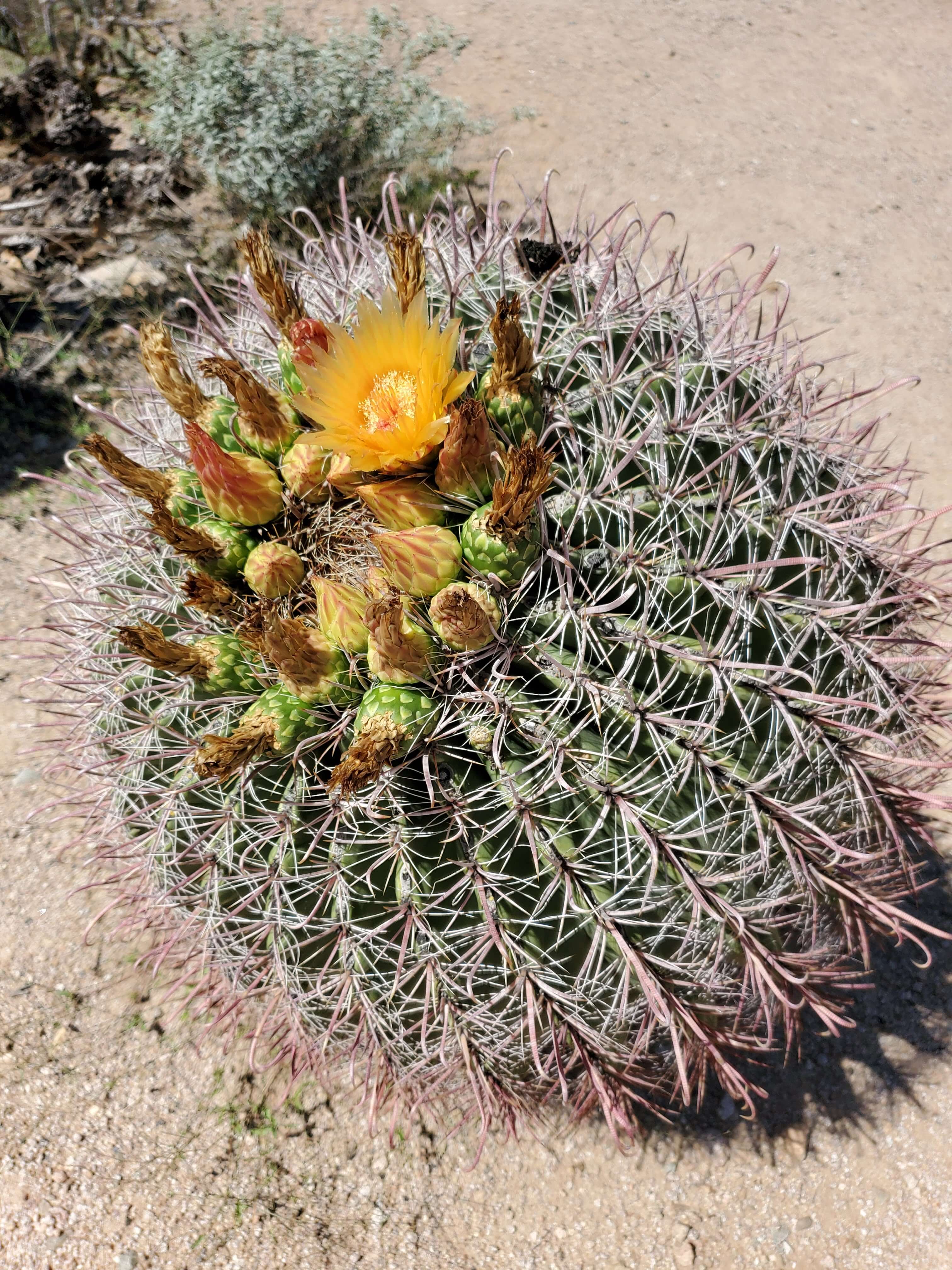
Top Things to Do in Saguaro National Park
Before putting together your itinerary for a trip to Saguaro National Park, it’s important to know the difference between the park’s two districts and what kinds of activities are available in each.
The west section of the park has a higher density of the park’s namesake saguaro cacti. If you’re short on time and want to see the park’s highlights, I would prioritize a visit to the west side.
The east district is larger and more mountainous with more miles of hiking trails. And as mentioned above, it’s the only area in the park with backcountry camping. If you have more time or want to avoid crowds, include the east side in your itinerary.
Want to see both? Keep in mind that the west and east districts are about an hour drive apart from each other.
With that said, here is a list of top things to do in Saguaro National Park.
Pop in to a visitor center
There are two visitor centers in Saguaro National Park: Red Hills Visitor Center (west district) and Rincon Mountain Visitor Center (east district).
Start off your trip at a visitor center to pay the entrance fee, pick up a park map, and fill up your water bottles at a refilling station.
Check out the gift shop as well – we bought a few novelty items including prickly pear jelly!
Walk the Desert Discovery Trail
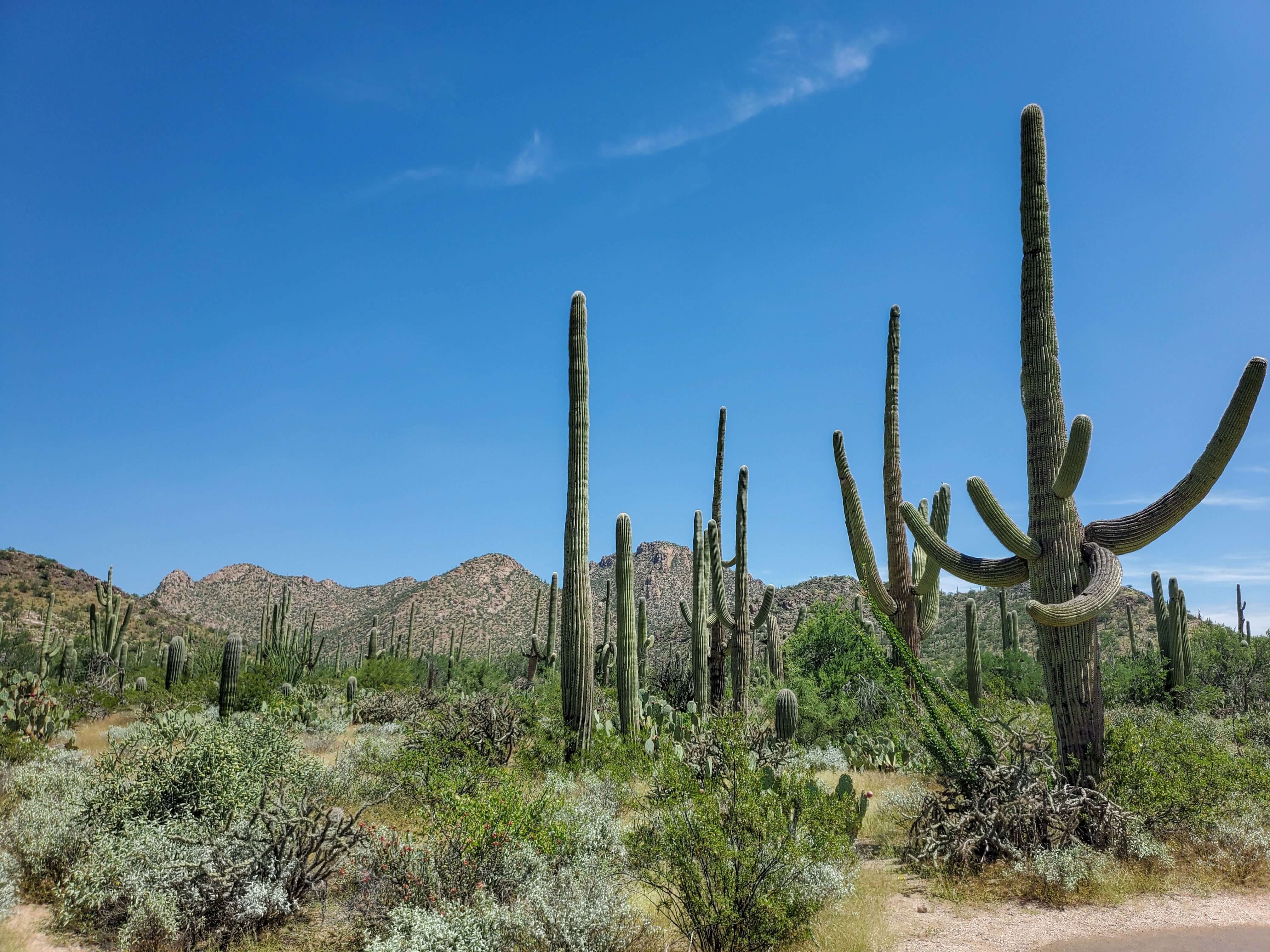
The Desert Discovery Trail is a flat, paved half-mile loop in the west district. Take a stroll through tall Saguaro cacti and read the signage to learn more about this desert ecosystem.
Drive the Bajada Scenic Loop
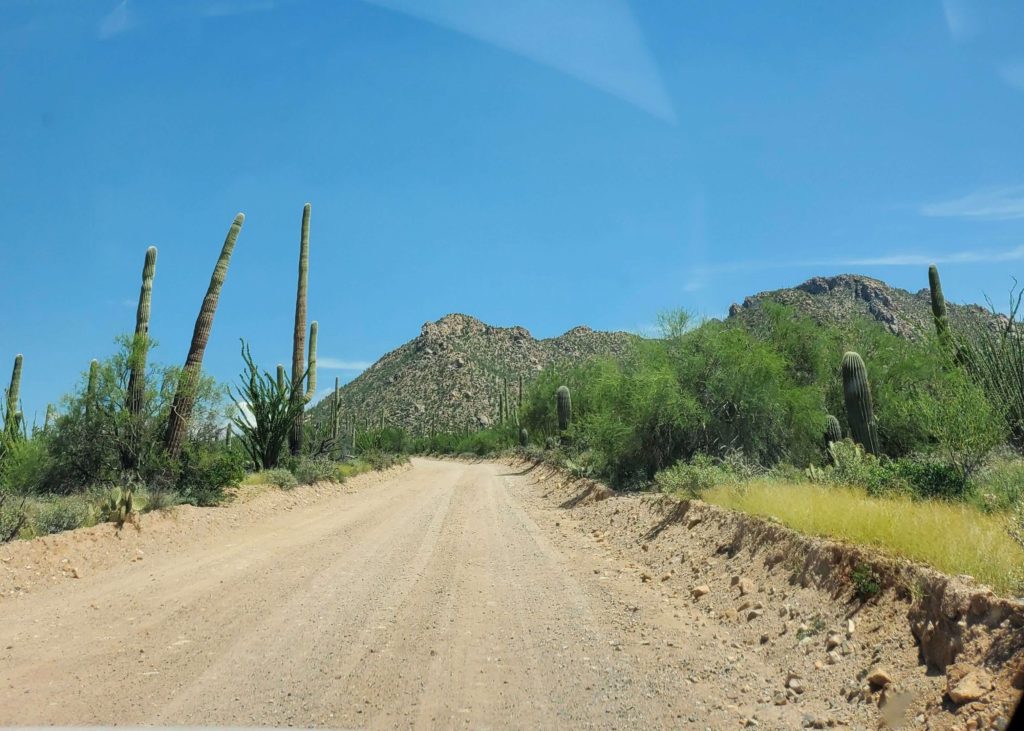
Both districts in Saguaro National Park have a scenic driving loop. The Bajada Scenic Loop is the one in the west district.
The Bajada Scenic Loop is six miles long and offers scenic vistas, picnic areas, and trailheads.
This loop is made up of two roads: Golden Gate Road and Hohokam Road. It’s a dirt road but should be suitable for any passenger vehicle.
Drive the loop counterclockwise (i.e. start on Hohokam Road) because one portion of the loop is a one-way road.
Hike to Valley View Overlook
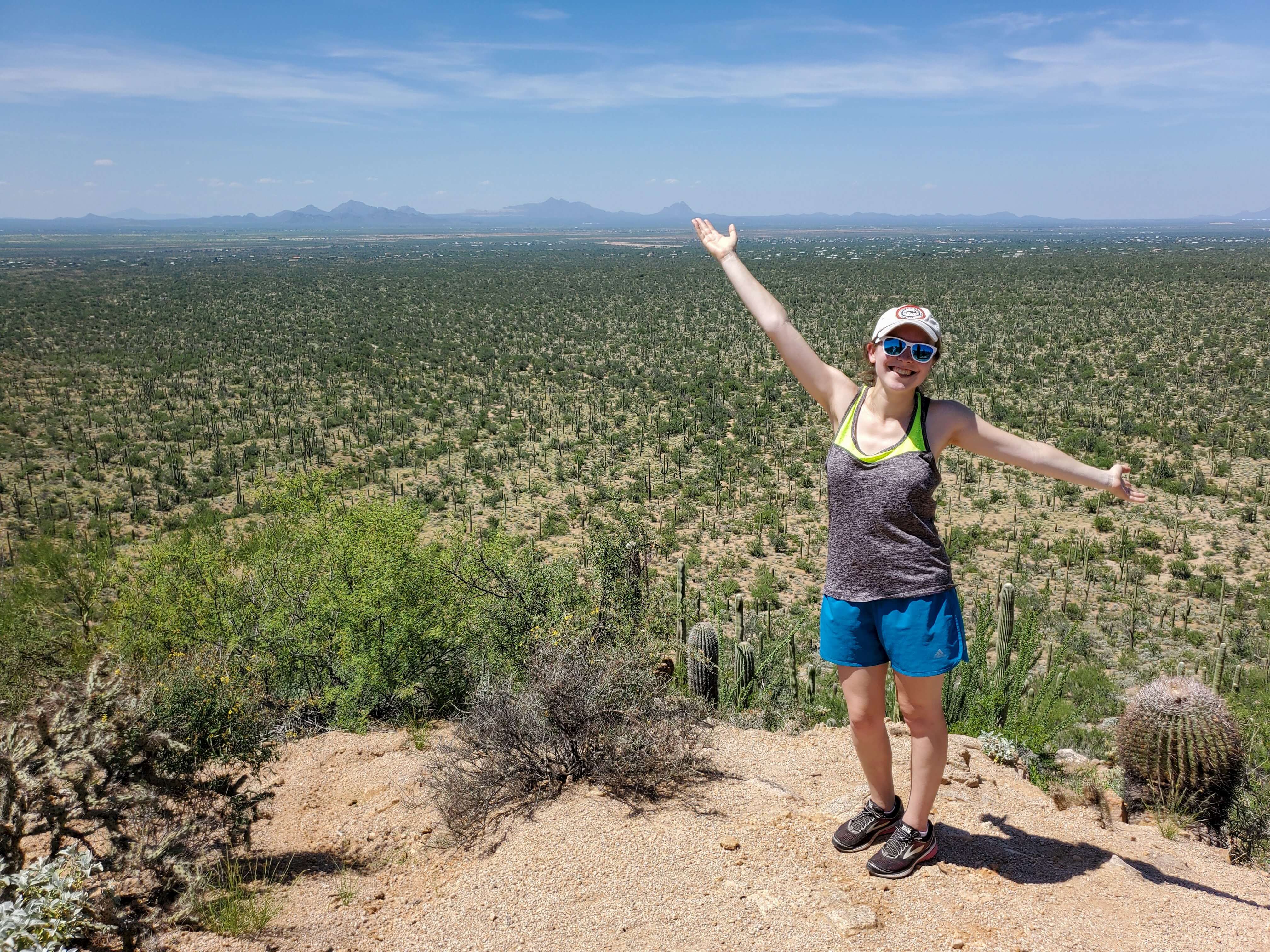
The trailhead to Valley View Overlook can be found along Hohokam Road in the Bajada Scenic Loop.
The end point of this hike offers views of mountains, the desert, and saguaro forest.
The trail is 0.8 miles roundtrip, but it intersects with several other trails if you have time to extend your hike.
See Prehistoric Petroglyphs
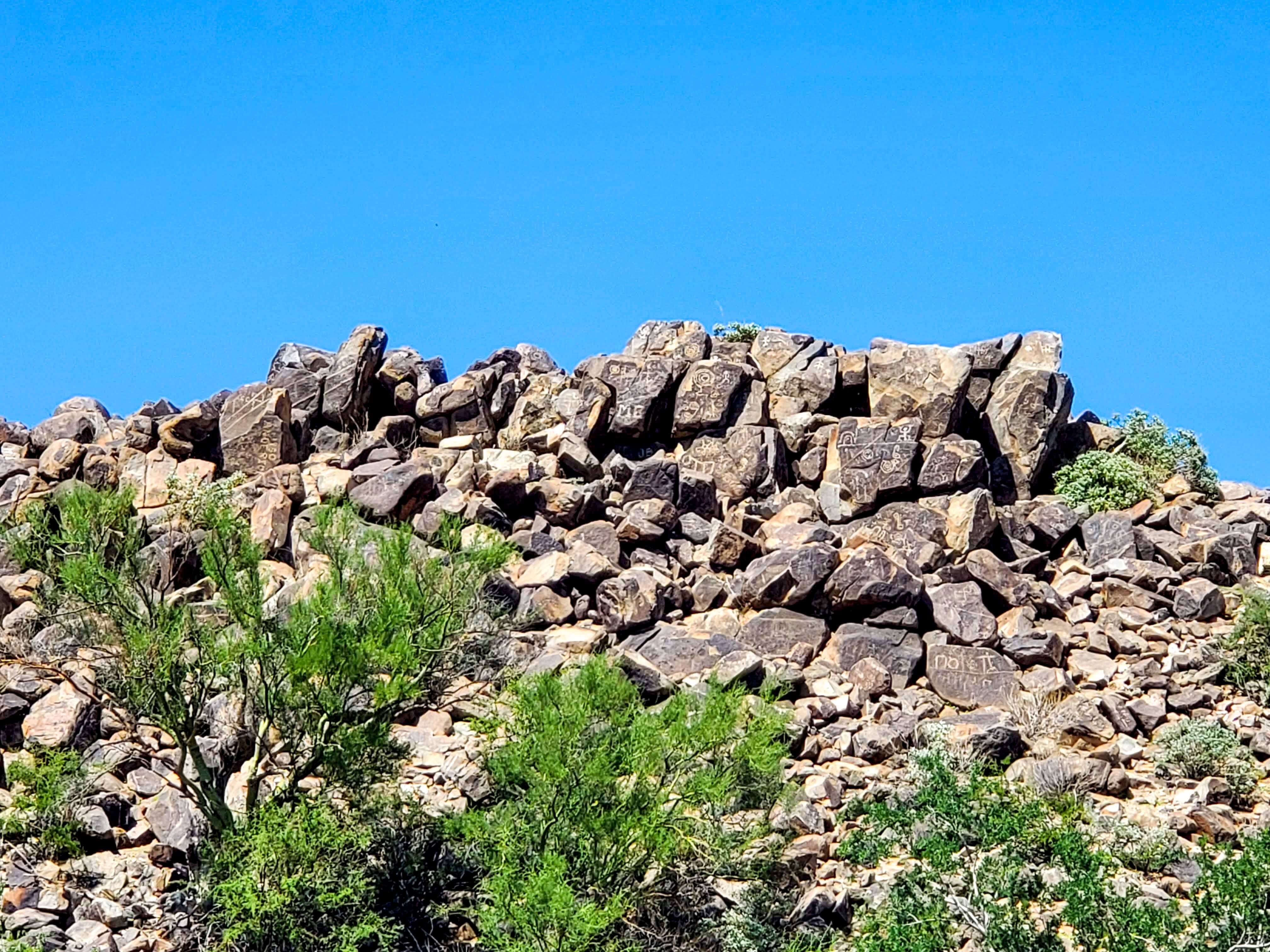
When you’re driving the Bajada Scenic Loop, make a stop at Signal Hill.
Here, you can find over two hundred petroglyphs made by the Hohokam people. It is estimated these petroglyphs are possibly 1,000 years old!
Visitors must take a 0.3-mile roundtrip trail from the parking area to access the petroglyphs.
Drive the Cactus Forest Loop
The Cactus Forest Loop is the other scenic loop in Saguaro National Park, located in the east district. In fact, this is the only drivable area in the east district.
The Cactus Forest Loop is an 8-mile loop with scenic vistas and access to trailheads.
Drive clockwise as most of the loop is a one-way road. Unlike the Bajada Scenic Loop, the Cactus Forest Loop is paved.
Take a hike in the east district
There are over 120 miles of trails in the east district, accounting for the majority of the 175 miles of trails in Saguaro National Park.
Much of this distance consists of lengthy trails for backcountry campers to explore the desert wilderness.
For the amateur adventurer looking for a shorter hike, consider the Freeman Homestead Trail (a 1-mile loop) or the Loma Verde Loop (3.8 miles with 60 feet of elevation gain). Trailheads for both of these hikes are located along the Cactus Forest Loop.
Watch the sun set
The Arizona desert is a wonderful place to see some of the most gorgeous sunsets with vibrant shades of orange, red, and purple painting the sky.
If you’re spending the night near Saguaro National Park, take a moment to watch a beautiful sunset before heading to your final destination for the night.
The National Park Service recommends two locations to catch a beautiful sunset in Saguaro National Park.
In the east district, stop at the Javelina Rocks pull out on the Cactus Forest Loop.
If you end your day in the west district, head a bit outside the park to Gates Pass along Gates Pass Road. For those who are staying the night at Gilbert Ray Campground, Gates Pass is about a five minute drive away.
Need more help planning your trip? Check out my seven tips to plan a perfect national park trip!
As always, enjoy the outdoors responsibly. Leave no trace on all of your adventures.
